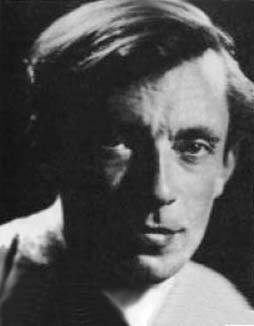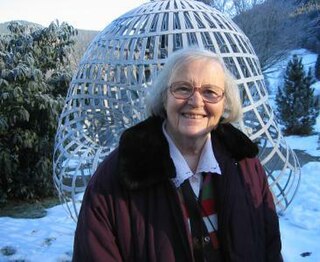Related Research Articles

Shing-Tung Yau is a Chinese-American mathematician and the William Caspar Graustein Professor of Mathematics at Harvard University. In April 2022, Yau retired from Harvard to become a professor of mathematics at Tsinghua University.
In science and especially in mathematical studies, a variational principle is one that enables a problem to be solved using calculus of variations, which concerns finding functions that optimize the values of quantities that depend on those functions. For example, the problem of determining the shape of a hanging chain suspended at both ends—a catenary—can be solved using variational calculus, and in this case, the variational principle is the following: The solution is a function that minimizes the gravitational potential energy of the chain.

Hilbert's sixth problem is to axiomatize those branches of physics in which mathematics is prevalent. It occurs on the widely cited list of Hilbert's problems in mathematics that he presented in the year 1900. In its common English translation, the explicit statement reads:
In the mathematical field of differential geometry, Ricci-flatness is a condition on the curvature of a (pseudo-)Riemannian manifold. Ricci-flat manifolds are a special kind of Einstein manifold. In theoretical physics, Ricci-flat Lorentzian manifolds are of fundamental interest, as they are the solutions of Einstein's field equations in vacuum with vanishing cosmological constant.

Sir Edmund Taylor Whittaker was a British mathematician, physicist, and historian of science. Whittaker was a leading mathematical scholar of the early 20th-century who contributed widely to applied mathematics and was renowned for his research in mathematical physics and numerical analysis, including the theory of special functions, along with his contributions to astronomy, celestial mechanics, the history of physics, and digital signal processing.
Jürgen Kurt Moser was a German-American mathematician, honored for work spanning over four decades, including Hamiltonian dynamical systems and partial differential equations.

Ennio De Giorgi was an Italian mathematician who worked on partial differential equations and the foundations of mathematics.

Olga Aleksandrovna Ladyzhenskaya was a Russian mathematician who worked on partial differential equations, fluid dynamics, and the finite difference method for the Navier–Stokes equations. She received the Lomonosov Gold Medal in 2002. She is the author of more than two hundred scientific works, among which are six monographs.

In physics, canonical quantum gravity is an attempt to quantize the canonical formulation of general relativity. It is a Hamiltonian formulation of Einstein's general theory of relativity. The basic theory was outlined by Bryce DeWitt in a seminal 1967 paper, and based on earlier work by Peter G. Bergmann using the so-called canonical quantization techniques for constrained Hamiltonian systems invented by Paul Dirac. Dirac's approach allows the quantization of systems that include gauge symmetries using Hamiltonian techniques in a fixed gauge choice. Newer approaches based in part on the work of DeWitt and Dirac include the Hartle–Hawking state, Regge calculus, the Wheeler–DeWitt equation and loop quantum gravity.

Renato Caccioppoli was an Italian mathematician, known for his contributions to mathematical analysis, including the theory of functions of several complex variables, functional analysis, measure theory.
In mathematics, a (real) Monge–Ampère equation is a nonlinear second-order partial differential equation of special kind. A second-order equation for the unknown function u of two variables x,y is of Monge–Ampère type if it is linear in the determinant of the Hessian matrix of u and in the second-order partial derivatives of u. The independent variables (x,y) vary over a given domain D of R2. The term also applies to analogous equations with n independent variables. The most complete results so far have been obtained when the equation is elliptic.

Stefan Bergman was a Congress Poland-born American mathematician whose primary work was in complex analysis. His name is also written Bergmann; he dropped the second "n" when he came to the U. S. He is best known for the kernel function he discovered while at University of Berlin in 1922. This function is known today as the Bergman kernel. Bergman taught for many years at Stanford University, and served as an advisor to several students.
In mathematics, specifically in differential geometry, isothermal coordinates on a Riemannian manifold are local coordinates where the metric is conformal to the Euclidean metric. This means that in isothermal coordinates, the Riemannian metric locally has the form
Vladimir Gilelevich Maz'ya is a Russian-born Swedish mathematician, hailed as "one of the most distinguished analysts of our time" and as "an outstanding mathematician of worldwide reputation", who strongly influenced the development of mathematical analysis and the theory of partial differential equations.

Wolfgang Smith is a mathematician, physicist, philosopher of science, metaphysician, Roman Catholic and member of the Traditionalist School. He has written extensively in the field of differential geometry, as a critic of scientism and as a proponent of a new interpretation of quantum mechanics that draws heavily from premodern ontology and realism.
Robert Bartnik was an Australian mathematician based at Monash University. He was known for his contributions to the rigorous mathematical study of general relativity. He received his bachelor's and master's degrees from Melbourne University and a PhD in mathematics from Princeton University in 1983, where his advisor was Shing-Tung Yau. In 2004 he was elected to the Australian Academy of Science, with citation:
Professor Bartnik is renowned internationally for the application of geometric analysis to mathematical problems arising in Einstein's theory of general relativity. His work is characterised by his ability to uncover new and anticipated phenomena in space-time geometry, often employing sophisticated tools from linear and nonlinear partial differential equations as well as elaborate numerical computations. He has contributed greatly to our understanding of the properties of the Einstein equations and gravitation.
In the mathematical fields of differential geometry and geometric analysis, inverse mean curvature flow (IMCF) is a geometric flow of submanifolds of a Riemannian or pseudo-Riemannian manifold. It has been used to prove a certain case of the Riemannian Penrose inequality, which is of interest in general relativity.

Yvonne Choquet-Bruhat is a French mathematician and physicist. She has made seminal contributions to the study of Einstein's general theory of relativity, by showing that the Einstein equations can be put into the form of an initial value problem which is well-posed. In 2015, her breakthrough paper was listed by the journal Classical and Quantum Gravity as one of thirteen 'milestone' results in the study of general relativity, across the hundred years in which it had been studied.
Shoshana Kamin, born Susanna L'vovna Kamenomostskaya, is a Soviet-born Israeli mathematician, working on the theory of parabolic partial differential equations and related mathematical physics problems.

Luigi Amerio, was an Italian electrical engineer and mathematician. He is known for his work on almost periodic functions, on Laplace transforms in one and several dimensions, and on the theory of elliptic partial differential equations.
References
- ↑ Eagle (1958)
- ↑ Eagle (1958) , p. ix
- 1 2 Bowler (2001) , p.142
- ↑ E. W. M. (1937). "The Philosophy of Religion versus The Philosophy of Science" (PDF). Nature . 139: 463.
- 1 2 3 4 A. L. (1939). "Reviewed Work: The Philosophy of Religion Versus the Philosophy of Science by Albert Eagle". Studies: An Irish Quarterly Review . 28 (112): 706–707.
Bibliography
- "The conception of curved space: report on a lecture by Albert Eagle", Nature, 141: 679, 1938, doi: 10.1038/141679a0
- Bowler, P. J. (2001), Reconciling science and religion: the debate in early-twentieth-century Britain, Science and its conceptual foundations, University of Chicago Press, ISBN 978-0-226-06858-9
- Eagle, Albert (1958), The elliptic functions as they should be: an account, with applications, of the functions in a new canonical form, Galloway and Porter, Ltd., Cambridge, England, ISBN 9780852500002, MR 0093599, Zbl 0083.07401